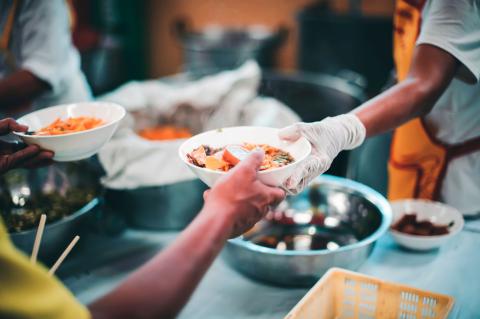Download the Food Establishment Donations to Charitable Feeding Program Fact Sheet
In the 2022 FDA Food Code, the U.S. Food and Drug Administration clarified that food donations from food retailers and restaurants to charitable feeding programs are acceptable if proper food safety practices are followed. Here are some key points to consider:
Check with Local Organizations
□ Contact your local food pantry or soup kitchen to find out what items they will accept.
□ Establish a relationship with a local food pantry, soup kitchen, or the NH Food Bank, and together establish:
Types and quantities of food to donate.
How often do you intend to donate.
Coordinate delivery options.
New Hampshire Food Pantries & Feeding Programs
□ NH Food Bank member agencies cannot separate food into smaller servings, except for whole produce. For example, they cannot divide 25-pound bags of rice into smaller bags; yet they can divide a 50 lb. bag of potatoes into smaller portions.
□ If you have large quantities, consider donating them to a soup kitchen or food program that prepares meals for those in need.
□ Pre-portion prepared food into serving-size containers - depending on the intended recipient – larger containers for soup kitchens and individual or family serving sizes for food pantry patrons.
□ Label each container with the name of the food, preparation date, discard date, major allergens, your establishment’s contact information, and safe handling instructions if not ready to eat.
□ Keep accurate records of what and when you donated.

Prioritize Food Safety
□ Ensure that donated food is properly prepared, unopened, uncontaminated, within its use-by date, stored and transported at the correct temperature, and not previously served to customers, reheated, or placed on a buffet line.
□ Always check with the receiving pantry or feeding program about their specific donation requirements and follow local food safety regulations.
□ Note that some food pantries may have limited refrigerator or freezer space for large donations of perishable food.
□ Store refrigerated food at 41°F or below, frozen food at 0°F or below, hot food at 135°F or higher, and shelf-stable food at 50-70°F prior to and during delivery.
□ Delivery containers should be cleaned and sanitized after every use.
Guidance Documents:
The Conference for Food Protection provides guidance documents to help you make decisions on how to donate food. Useful factsheets include
Good Samaritan Food Donation Act
This law protects businesses from liability when donating food in good faith, if proper food safety practices are followed. For more information on the Good Samaritan Food Donation Act.
Sources:
Conference for Food Protection. Comprehensive Guidance for Food Recovery Programs. https://www.foodprotect.org/Guides-and-Documents
U.S. Food and Drug Administration. 2022 Food Code. https://www.fda.gov/food/retail-food-protection/fda-food-code


